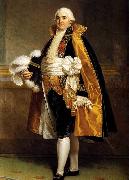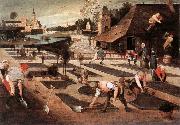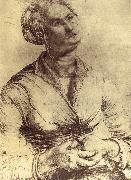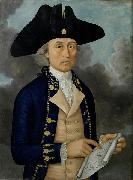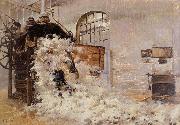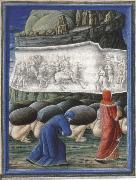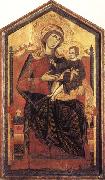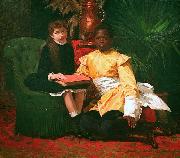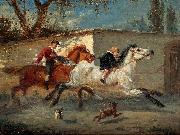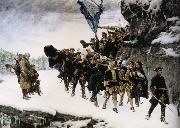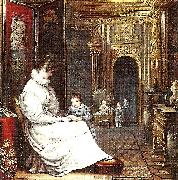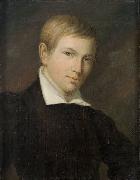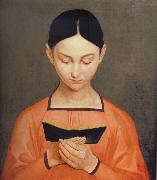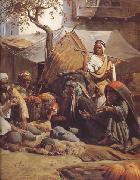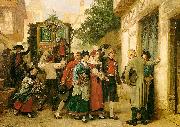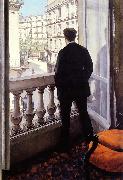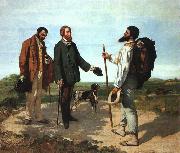|
|
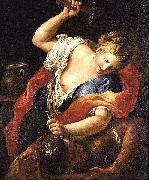 |
Gregorio Lazzarini
|
|
(1657 - 10 November 1730) was an Italian painter, mostly of religious subjects, and those from history and mythology.
Born in Venice, he initially trained with the Genovese painter Francesco Rosa, Girolamo Forabosco, and with the studio of Pietro della Vecchia. He joined the painters' guild in Venice in 1687. |
|
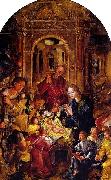 |
Gregorio Lopes
|
|
Gregorio Lopes (c. 1490 - 1550) was one of the most important Renaissance painters from Portugal.
Gregorio Lopes was educated in the workshop of Jorge Afonso, the court painter of King Manuel I. Later he himself became court painter for both Manuel I and for his successor, John III. In 1514 he married the daughter of Jorge Afonso, and in 1520 was knighted by Prince Jorge de Lencastre and entered the Order of Santiago.
The work of Gregorio Lopes mainly consists of painted religious altarpieces for various churches and monasteries in central Portugal. Between 1520 and 1525 he worked (together with Jorge Leal) in painting altarpieces for the Saint Francis Convent of Lisbon. Also in the 1520s he painted panels for the Church of Paraeso (Paradise), also in Lisbon. In his first fase, Gregorio Lopes also worked in Sesimbra, Setebal and in the Monastery of Ferreirim, in this latter case together with Cristevao de Figueiredo and Garcia Fernandes.
The painter moved in the 1530s to the city of Tomar, where he painted various panels for the Round Church of the Convent of Christ (1536 - 1539) and the main altarpiece of the Church of Saint John the Baptist (1538 - 1539). His last known works include altarpieces for the Convent of Santos-o-Novo in Lisbon (1540) and the Valverde Convent, near Évora (1545). |
|
|
|
|
|
 |
grieg
|
|
Period: Post-Romantic (1870-1909)
Country: Norway
Born: June 15, 1843 in Bergen, Norway
Died: September 04, 1907 in Bergen, Norway
Genres: Chamber Music, Concerto, Keyboard Music, Miscellaneous Music, Orchestral Music, Vocal Music |
|
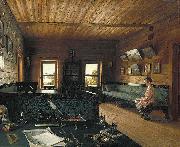 |
Grigoriy Soroka
|
|
(Russian, real surname Vasilyev. November 27 [O.S. November 15] 1823-April 22 [O.S. April 10] 1864) was a Russian painter, one of the most notable members of Venetsianov school.
Soroka was born in Pokrovskoye village (Tver Guberniya), in the family of landowner Milyukov. In 1842-1847 he studied art from Alexey Venetsianov then he was returned to his owner. In 1850s-1860s he resided in his home village. He fell in love with his owners's daughter Lydia but was forcibly married to a serf woman. After the emancipation reform of 1861 in Russia, Soroka remained under the serfdom system. He made a formal complaint but it was rejected and he was flogged. Soroka's body was found in the baking room where he had hanged himself. His beloved Lydia poisoned herself soon after. |
|
 |
Grigoriy Ugryumov
|
|
painted Alexander Nevsky in Pskov, after they victory over the Germans in 1793. |
|
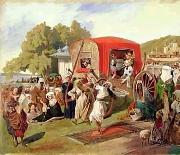 |
Grigory Gagarin
|
|
Russian: 11 May [O.S. 29 April] 1811 - 30 January [O.S. 18 January] 1893) was a Russian painter, Major General and administrator.
Grigory Gagarin was born in Saint Petersburg to the noble Rurikid princely Gagarin family. His father, Prince Grigory Ivanovich Gagarin (Saint Petersburg, 17 March 1782 - Tegernsee, 12 February 1837), was a Russian diplomat in France and later the ambassador to Italy. His father married in Saint Petersburg in 1809 his mother Yekaterina Petrovna Sojmonova (Saint Petersburg, 23 May 1790 - Moscow, 27 February 1873). Thus until the age 13 the boy was with his family in Paris and Rome and then studied in the collegium Tolomei in Siena. Grigory did not receive a formal artistic education, but took private lessons from the famous Russian painter Karl Briullov who at that time lived in Italy.
In 1832 he returned to Saint Petersburg, became acquainted with Alexander Pushkin and illustrated his works The Queen of Spades and The Tale of Tsar Saltan.He also became close to the opposition Circle of Sixteen and Mikhail Lermontov. |
|
|
|
|
|
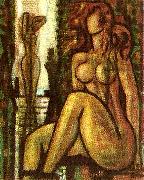 |
gromaire
|
|
Marcel Gromaire (July 24, 1892 ?C April 11, 1971) was a French painter. He painted many works on social subjects, and is often connotated with Social Realism. |
|
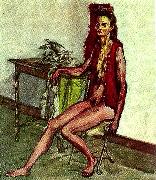 |
gruber
|
|
Francis Gruber (1912-1948) was a French painter and founder of the Nouveau R??alisme school.
Self-portrait 1942He was born in Nancy, the son of stained glass artist Jacques Gruber.
He first exhibited at the age of 18. While other artists were becoming more and more abstract, he preferred to paint human figures that were highly sculpted. He was influenced by Hieronymus Bosch and Albrecht D??rer and the Lorraine engraver Jacques Callot. He became friends with the Swiss artist Alberto Giacometti. |
|
|
|
|
|
|
|
|
|
|
|
|
|
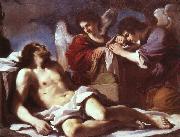 |
GUERCINO
|
|
Italian Baroque Era Painter, 1591-1666
|
|
|
|
|
|
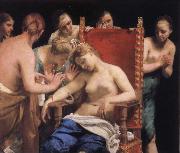 |
Guido Cagnacci
|
|
(January 19, 1601 - 1663) was an Italian painter of the late-Baroque period, belonging to the Forle painting school and to the Bolognese School.
Born in Santarcangelo di Romagna near Rimini, he died in Vienna in 1663. He worked in Rimini from 1627 to 1642. After that, he was in Forle, where absorbed the lesson of the Melozzo's painting.
Prior to that he had been in Rome, in contact with Guercino, Guido Reni and Simon Vouet. He may have had an apprenticeship with the elderly Ludovico Carracci. His initial output includes many devotional subjects. But moving to Venice under the name of Guico Baldo Canlassi da Bologna, he renewed a friendship with Nicolas Regnier, and dedicated himself to private salon paintings, often depicting sensuous naked women from thigh upwards, including Lucretia, Cleopatra, and Mary Magdalene.This allies him to a strand of courtly painting, epitomized in Florence by Francesco Furini, Simone Pignoni and others. In 1650, he moved to Venice. In 1658, he traveled to Vienna, where he remained under patronage of the emperor Leopold I.
His life was at times tempestuous, as characterized by his failed elopement (1628) with an aristocratic widow. Some contemporaries remark him as eccentric, unreliable and of doubtful morality. He is said to have enjoyed the company of cross-dressing models. |
|
|
|
|
|
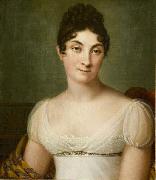 |
Guillaume Descamps
|
|
Guillaume-Desire-Joseph Descamps, a painter and engraver, was born at Lille in 1779. He was a pupil of Vincent, but, obtaining the "prix de Rome," he improved himself by travelling in Italy, and became court-painter of Murat in Naples. He died in Paris in 1858. The following paintings were executed by him:
The Women of Sparta (in the Lille Museum). 1808.
The Martyrdom of St. Andrew (in St. Andre, Lille).
Murat on board the Ceres distributing Rewards (engraved hy himself).
The Conversion of St. Augustine (in St. Eustache, Paris).
The Apotheosis of Cardinal Tommasi (in San Martino di Monti, Rome).
The Neapolitan Troops marching out against Capri. |
|
 |
Guillaume Seignac
|
|
He was born in Rennes, France, in 1870, and died in 1924. He started training at the Academie Julian in Paris, where he spent 1889 through 1895. He had a lot of teachers there, including Gabriel Ferrier, and Tony Robert-Fluery. Tony Robert Fluery was a noted history and genre artist. Gabriel Farrel, on the other hand, had been an awarded Prix de Rome. He had another one named William Bouguereau. |
|
 |
Guillaume Voiriot
|
|
Guillaume Voiriot (Paris, 1713 - Paris, 30 November 1799) was a French portrait painter. In the years of 1746-1749 Voiriot went, at its own expense, to Italy. After his return he became a member of the painters and sculptors guild at Academie de Saint-Luc. In the years 1759 to 1771 he regularly exhibited portraits of his contemporaries in the Paris Salon. He portrayed family members, scientists, writers, actors and musicians. |
|
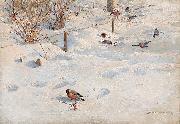 |
Gunnar aberg
|
|
Gunnar Berg (21 May 1863 -23 December 1893) was a Norwegian painter, known for his paintings of his native Lofoten. He principally painted memorable scenes of the everyday life of the local fishermen. |
|
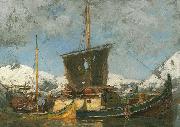 |
Gunnar Berg
|
|
(21 May 1863 - 23 December 1893) was a Norwegian painter, known for his paintings of his native Lofoten. He principally painted memorable scenes of the everyday life of the local fishermen.
Gunnar Berg was born on Svinøya in Svolvær on Lofoten, Nordland County, Norway. He was the oldest of 12 siblings born to a landlord and merchant, Lars Thodal Walnum Berg (1830-1903) and Lovise Johnsen (1842-1921). From 1875-81, he attended Cathedral School in Trondheim, and also took private lessons in drawing and painting by the artist H. J. Johannessen. He later attended a trade school in Bergen. He was first employed as a merchant. He later studied to became an artist. |
|
|
|
|
|
|
|
|
|
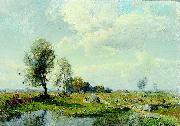 |
Gustaf Rydberg
|
|
painted Skansk slatt med pilvall - motiv fran Viby in 1923
Swedish, 1835-1933 |
|
|
|
|
|
|
|
 |
Gustav Adolph Hennig
|
|
Gustav Adolph Hennig (1797-1869)Professions: Historical-scenes painter; Porträtmaler; Miniature painter; Etcher; Lithographer. |
|
|
|
|
|
|
|
 |
Gustav Graef
|
|
(December 14, 1821 in Königsberg - January 6, 1895 in Berlin) was a German painter, primarily of portraits and historical subjects. He studied with Theodor Hildebrandt and Friedrich Wilhelm Schadow at the Kunstakademie Desseldorf. His son Botho Graef became an art historian of some note, and his daughter was the painter Sabine Lepsius.
|
|
|
|
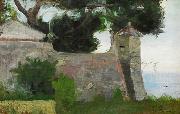 |
Gustav Wentzel
|
|
(7 October 1859 - 10 February 1927) was a Norwegian painter. He was best known for interiors and domestic and rural scenes. His artistic style was associated with Naturalism and noted for accurate observations and attention to detail.
Gustav Wentzel was born in Christiania. He was a pupil of painter Knud Bergslien (1879-81) of and Frits Thaulow in 1883. He also studied for a time in Paris at the Academie Julian in 1884 and at Academie Colarossi with Leon Bonnat and Alfred Philippe Roll (1888-89). Wentzel first public painting was exhibited in Albert Cammermeyer bookstore during the autumn of 1879. His painting Snekkersvennen, which had been rejected by the Christiania Kunstforening, led to a lasting dispute and the establishment of an exhibition organized by the artists themselves, which eventually became an annual event called Autumn Exhibition (Høstutstillingen) in Oslo.
Among his paintings at the National Gallery of Norway are I fiskernaustet from 1881, Frokost from 1882, and Dans i Setesdal from 1887. Wentzel was decorated Knight, First Class of the Royal Norwegian Order of St. Olav in 1908
|
|
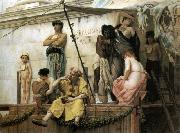 |
Gustave Boulanger
|
|
(1824-88) was a French figure painter known for his Neo-Grec style. He was born at Paris, studied with Delaroche and Jollivet, and in 1849 took the Prix de Rome. His paintings are prime examples of academic art of the time, particularly history painting. Boulanger had visited Italy, Greece, and North Africa, and his paintings reflect his attention to culturally correct details and skill in rendering the female form. His works include a Moorish Cafe (1848), Cæsar at the Rubicon (1865), the Promenade in the Street of Tombs, Pompeii (1869), and The Slave Market (1888). The recipient of many medals, he became a member of the Institut de France in 1882. |
|
|
|
|
|
|
|
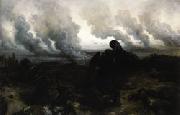 |
Gustave Dore
|
|
(French pronunciation: January 6, 1832 - January 23, 1883) was a French artist, engraver, illustrator and sculptor. Dore worked primarily with wood engraving and steel engraving.
Dore was born in Strasbourg and his first illustrated story was published at the age of fifteen. His skill had manifested itself even earlier, however. At age five he had been a prodigy troublemaker, playing pranks that were mature beyond his years. Seven years later, he began carving in cement. Subsequently, as a young man, he began work as a literary illustrator in Paris, winning commissions to depict scenes from books by Rabelais, Balzac, Milton and Dante.
In 1853, Dore was asked to illustrate the works of Lord Byron. This commission was followed by additional work for British publishers, including a new illustrated English Bible. A decade later, he illustrated a French edition of Cervantes's Don Quixote, and his depictions of the knight and his squire, Sancho Panza, have become so famous that they have influenced subsequent readers, artists, and stage and film directors' ideas of the physical "look" of the two characters. Dore also illustrated an oversized edition of Edgar Allan Poe's "The Raven", an endeavor that earned him 30,000 francs from publisher Harper & Brothers in 1883.
Dore's English Bible (1866) was a great success, and in 1867 Dore had a major exhibition of his work in London. This exhibition led to the foundation of the Dore Gallery in Covelant Bond Street. In 1869, Blanchard Jerrold, the son of Douglas William Jerrold, suggested that they work together to produce a comprehensive portrait of London. Jerrold had obtained the idea from The Microcosm of London produced by Rudolph Ackermann, William Pyne, and Thomas Rowlandson in 1808. Dore signed a five-year contract with the publishers Grant & Co that involved his staying in London for three months a year, and he received the vast sum of £10,000 a year for the project. Dore was mainly celebrated for his paintings in his day. His paintings remain world renowned, but his woodcuts and engravings, like those he did for Jerrold, are where he really excelled as an artist with an individual vision.
The completed book, London: A Pilgrimage, with 180 engravings, was published in 1872. It enjoyed commercial and socioeconomical success, but the work was disliked by many contemporary critics. Some of these critics were concerned with the fact that Dore appeared to focus on the poverty that existed in parts of London. Dore was accused by the Art Journal of "inventing rather than copying." The Westminster Review claimed that "Dore gives us sketches in which the commonest, the vulgarest external features are set down." The book was a financial success, however, and Dore received commissions from other British publishers. |
|
|
|
|









